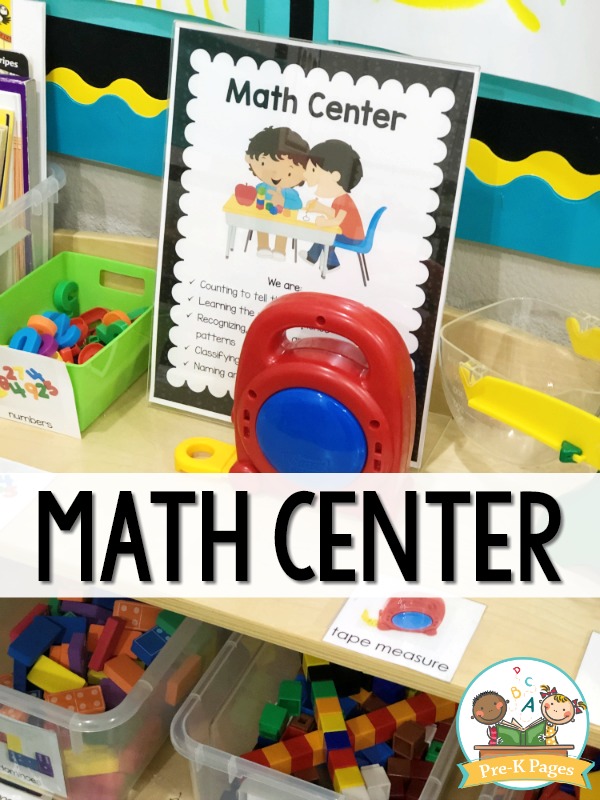Why early intervention matters when dealing with struggles in primary math
Wiki Article
Revealing the Best Faster Ways for Solving Math Problems Swiftly
In the domain of mathematics, performance is essential. Understanding shortcuts can transform the means people approach troubles. From leveraging the distributive property to utilizing quick reproduction techniques, these approaches enhance both rate and precision. Additionally, acknowledging patterns streamlines complex calculations. As one discovers these methods, they may reveal surprising insights that can alter their mathematical experience. What are the most effective techniques that can be conveniently integrated into everyday practice?Grasping Psychological Mathematics Techniques
Just how can one enhance their calculation speed without depending on calculators? Mastering mental math techniques uses a sensible solution. By employing strategies such as breaking numbers into smaller, workable components, people can streamline complicated estimations. As an example, when including two-digit numbers, rounding each number to the nearest ten can make psychological addition simpler before readjusting back to the original values.One more effective strategy is to practice multiplication tables thoroughly, enabling fast recall of products. Additionally, acknowledging patterns in numbers can assist in quicker calculations, such as using the homes of even and weird numbers. Normal method through games and problems can better improve these skills, making mental mathematics a lot more user-friendly.
Ultimately, growing self-confidence in one's arithmetic abilities allows for quicker decision-making and boosts general mathematical proficiency. By including these methods, anybody can considerably improve their estimation speed.

Making Use Of the Distributive Residential Property
The Distributive Home is a fundamental idea in maths that simplifies estimations by allowing multiplication across enhancement or subtraction. It is necessary for students to comprehend its application via useful instances, which can boost their analytical skills. Furthermore, identifying typical mistakes can better strengthen their understanding and prevent errors in future estimations.Recognizing the Distributive Home
Understanding the distributive residential or commercial property can considerably simplify mathematical estimations. This fundamental home states that when increasing a solitary term by an amount or distinction, one can disperse the multiplication across each term within the parentheses. For example, in the expression a(b + c), one can revise it as abdominal + ac. This technique not just streamlines computations yet additionally boosts understanding of just how numbers connect. The distributive residential or commercial property is especially helpful in algebra, where it assists in simplifying expressions and solving formulas. In addition, it prepares for extra intricate principles, such as factoring and polynomial procedures. By grasping the distributive home, trainees can develop a solid structure for taking on a vast array of mathematical difficulties efficiently.Practical Examples Illustrated
Why is it vital to apply the distributive property in useful circumstances? The distributive building enables people to simplify intricate calculations, making analytic a lot more reliable. When computing the overall cost of numerous products, one can make use of the expression 5(2 + 3) to locate the complete cost of 5 products valued at $2 and $3. By distributing, the calculation ends up being 5 × 2 + 5 × 3, yielding a quicker outcome of $25. One more example remains in algebra, where simplifying expressions like 3(x + 4) can be attained with circulation, leading to 3x + 12. Such applications show the efficiency of this building in numerous real-world situations, improving both speed and accuracy in mathematical analytic.Common Blunders to Avoid
Although the distributive residential property is an effective device in mathematics, typical mistakes can result in wrong results. When pupils neglect to distribute the coefficient to each term within parentheses, one frequent error happens. As an example, in the expression 3(x + 4), falling short to apply the residential property appropriately can lead to leaving out the reproduction, yielding an inaccurate solution. Another error includes misapplying the building by including rather than increasing, specifically when negative indicators are involved. Furthermore, trainees may disregard to streamline the final result, which can odd errors made throughout circulation. Identifying and preventing these challenges can boost analytic effectiveness and accuracy when using the distributive home in various mathematical contexts.Quick Reproduction Shortcuts
In the domain of fast multiplication faster ways, methods like increasing by powers of 10 and the doubling and halving method stick out. These methods can considerably simplify calculations, making them extra obtainable. Comprehending these shortcuts can improve effectiveness in mathematical problem-solving.Multiplying by Powers of 10
When increasing by powers of 10, the process becomes extremely simple, as the operation mainly includes shifting the decimal factor. Multiplying a number by 10 needs moving the decimal one location to the right, while multiplying by 100 demands a shift of 2 areas. This simpleness includes bigger powers, where each additional absolutely no indicates an additional decimal shift. As an example, multiplying 5.6 by 1,000 cause 5,600. This technique greatly improves rate and accuracy, as people can rapidly picture link the outcome without intricate estimations. Such effectiveness is specifically helpful in mental math or when time is restricted, permitting fast analytic in various mathematical contexts. Understanding this technique is necessary for anyone aiming to boost their math abilities.Doubling and Halving Approach
The Increasing and Halving Technique supplies a reliable strategy for quick multiplication, particularly when dealing with also numbers. This technique includes changing a reproduction problem into an easier type by either increasing one of the numbers and cutting in half the various other. For instance, to calculate 16 × 25, one can cut in half 16 to obtain 8 and dual 25 to get 50, causing 8 × 50, which equates to 400. This technique simplifies estimations, making them more manageable. It is particularly beneficial in psychological mathematics, permitting individuals to resolve problems quickly and accurately. By leveraging this technique, specialists and pupils can enhance their mathematical agility, thus improving overall performance in mathematical tasks.Efficient Department Strategies
Although department commonly postures obstacles for several learners, using reliable techniques can substantially streamline the procedure. One efficient technique is using suitable numbers, which includes rounding the divisor and dividend to easier values that are close to the original numbers. This strategy makes mental estimations more convenient. Another technique is the estimate technique, where learners can discover a harsh response before executing the specific division, supplying a beneficial criteria for accuracy.The long department technique remains a staple for dividing bigger numbers. By breaking the procedure into smaller sized, extra absorbable actions, students can preserve clarity. The repeated subtraction method can also be handy, especially for those that have problem with even more abstract concepts. By systematically deducting the divisor from the dividend, individuals can envision the process. On the whole, these strategies can improve department skills, resulting in quicker and extra accurate analytical capacities.
Fast Addition and Reduction Approaches
How can learners improve their rate and precision in addition and subtraction? One efficient approach is to utilize mental math methods, such as damaging numbers right into smaller sized, more manageable parts. For circumstances, when including 47 and 36, one can initially include 40 and 30 to get 70, then add the remaining 7 and 6 to reach 83. This approach simplifies calculations and reduces errors.Another method includes utilizing the number line for aesthetic students, assisting them to see the connections between numbers and enhance their comprehension. Furthermore, experimenting tools like flashcards can strengthen quick recall of basic sums and distinctions.
Learners can benefit from familiarizing themselves with benchmark numbers, such as rounding to the local 10, which permits for quicker evaluations. By integrating these approaches into their practice, learners can considerably boost their speed and accuracy in basic arithmetic operations.
Leveraging Estimate for Quick Calculations
Estimation works as an effective device for boosting estimation speed, complementing mental math methods efficiently. By rounding numbers to their closest whole values, individuals can streamline complicated calculations, making it much easier to reach an approximate result quickly. For example, when faced with an issue like 198 + 267, rounding to 200 + 270 yields a fast estimate of 470, allowing the solver to examine the accuracy of the last response.In addition, evaluation is particularly beneficial in scenarios including reproduction and department. By rounding elements to less complex numbers, one can rapidly evaluate approximate items or quotients. This strategy not only saves time yet also assists in recognizing prospective mistakes in calculations.
Recognizing Patterns and Solutions
Patterns and solutions are necessary devices in mathematics that allow people to solve issues more efficiently. Acknowledging these patterns allows learners to determine partnerships between numbers and ideas, which can streamline complex computations. As an example, recognizing the quadratic formula (ax ^ 2 + bx + c = 0) assists in fast solutions to various equations.Patterns in series, such as math or geometric developments, aid people forecast future terms without considerable estimations. Solutions, on the various other hand, work as faster ways, permitting for faster analytic by enveloping intricate partnerships right into convenient expressions.
Often Asked Concerns
Exactly How Can I Boost My Focus While Addressing Mathematics Issues Swiftly?
To enhance focus while solving math troubles swiftly, one can eliminate interruptions, set details visit our website objectives, method mindfulness techniques, take regular breaks, and keep a regular research study routine to enhance focus and psychological clarity.What Apps or tools Assist with Quick Mathematics Problem-Solving?
Various devices and applications, such as Photomath, Microsoft Math Solver, and Desmos, enhance fast math analytic. These sources provide detailed options, graphing abilities, and instant responses, making them useful for students and specialists alike.Exist Particular Mathematics Shortcuts for Standardized Examinations?
Yes, particular mathematics faster ways for standardized examinations include strategies like estimation, recognizing number properties, using the process of removal, and mastering usual formulas. These approaches enhance rate and accuracy, enhancing total examination performance.
Exactly how Do I Exercise Math Shortcuts Efficiently?
To exercise mathematics shortcuts efficiently, people ought to consistently resolve diverse troubles, make use of online resources, and involve in timed drills - struggles in primary math. Uniformity and representation on mistakes enhance understanding, eventually bring about improved speed and accuracy in computationsCan Shortcuts Be Applied to Complicated Mathematics Troubles?
Faster ways can indeed be related to intricate math issues, although their performance differs. Proficiency of fundamental principles and critical reasoning enables individuals to simplify processes, making it simpler to tackle detailed calculations successfully.By using strategies such as breaking numbers right into smaller sized, workable components, he has a good point individuals can simplify complex calculations. Additionally, recognizing patterns in numbers can assist in much faster estimations, such as making use of the properties of also and weird numbers. Evaluation offers as an effective device for enhancing computation speed, enhancing mental mathematics techniques properly. By rounding numbers to their local whole worths, people can streamline complicated estimations, making it much easier to show up at an approximate outcome promptly. Identifying these patterns permits learners to identify partnerships between ideas and numbers, which can streamline complicated calculations.
Report this wiki page